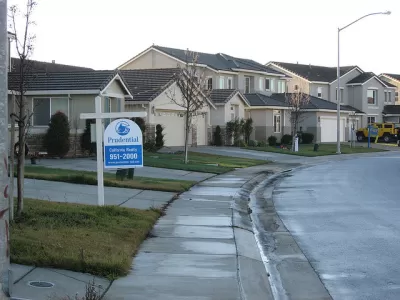Policy makers dealing with housing issues aren't fully absorbing the numbers. In the second of a series on the subject, Ben Brown and Dr. Arthur C. Nelson help clarify what's going on and what we can do about it.

As wealthier boomers escalate demand for small-scale housing in close-in locations where supply-demand gap is already acute, less-well-off boomers are getting stuck in homes they can’t sell for money they need to move to age-friendly situations. This is shaping up to be a major short-sell risk, particularly in suburban locations and regions where population is in decline.
More than half of the counties in the contiguous U.S. seem likely to face the risk of over-supply of senior homes. Even if all new housing units built from 2018 to 2038 were in walkable communities, increasing from about 28 million to 63 million, a little more than half the preference for homes in walkable communities would be met.
Dr. Nelson lays out a number of actions that are required:
- Help policymakers run the numbers and get over some wrong assumptions.
- Rewrite zoning to allow walkable, mixed-use complete communities with smaller housing options.
- Put better suburban retrofit supports in place for those who will be forced to age in place.
FULL STORY: Full story here

Americans May Be Stuck — But Why?
Americans are moving a lot less than they once did, and that is a problem. While Yoni Applebaum, in his highly-publicized article Stuck, gets the reasons badly wrong, it's still important to ask: why are we moving so much less than before?

Using Old Oil and Gas Wells for Green Energy Storage
Penn State researchers have found that repurposing abandoned oil and gas wells for geothermal-assisted compressed-air energy storage can boost efficiency, reduce environmental risks, and support clean energy and job transitions.

Placekeeping: Setting a New Precedent for City Planners
How a preservation-based approach to redevelopment and urban design can prevent displacement and honor legacy communities.

A Year-Long Investigation On Permanent Supportive Housing
The New York Times reveals what’s working and what’s not in the cornerstone of Housing First.

Survey: US Public Spaces Not Meeting Community Needs
A lack of funding prevents many U.S. parks and public spaces from playing a more significant role in helping residents meet daily needs.

San Francisco’s Muni Ridership Grew in 2024
The system saw its highest ridership since before the Covid-19 pandemic, but faces a severe budget shortage in the coming year.
Urban Design for Planners 1: Software Tools
This six-course series explores essential urban design concepts using open source software and equips planners with the tools they need to participate fully in the urban design process.
Planning for Universal Design
Learn the tools for implementing Universal Design in planning regulations.
Heyer Gruel & Associates PA
City of Moreno Valley
Institute for Housing and Urban Development Studies (IHS)
City of Grandview
Harvard GSD Executive Education
Salt Lake City
NYU Wagner Graduate School of Public Service
City of Cambridge, Maryland


























